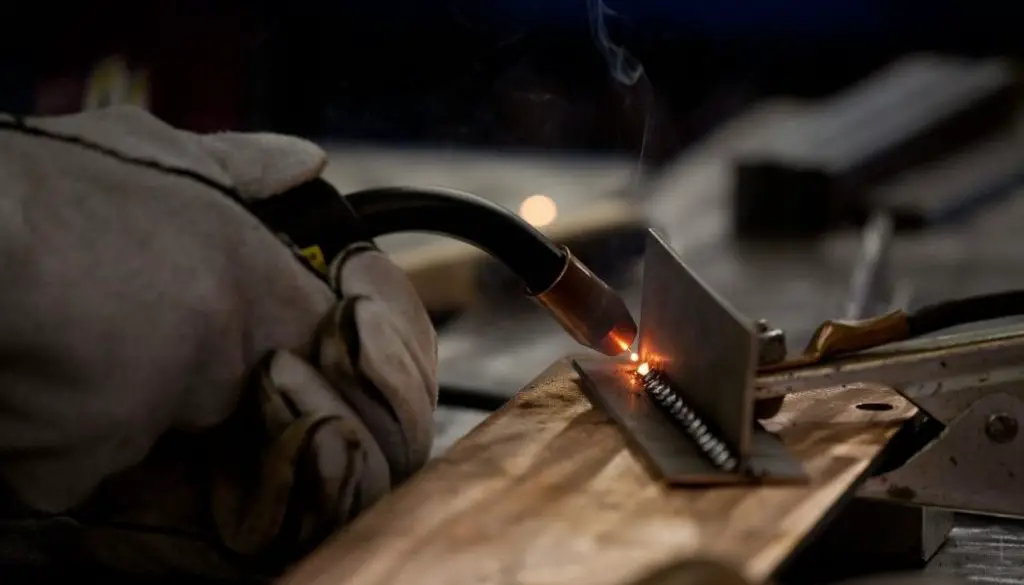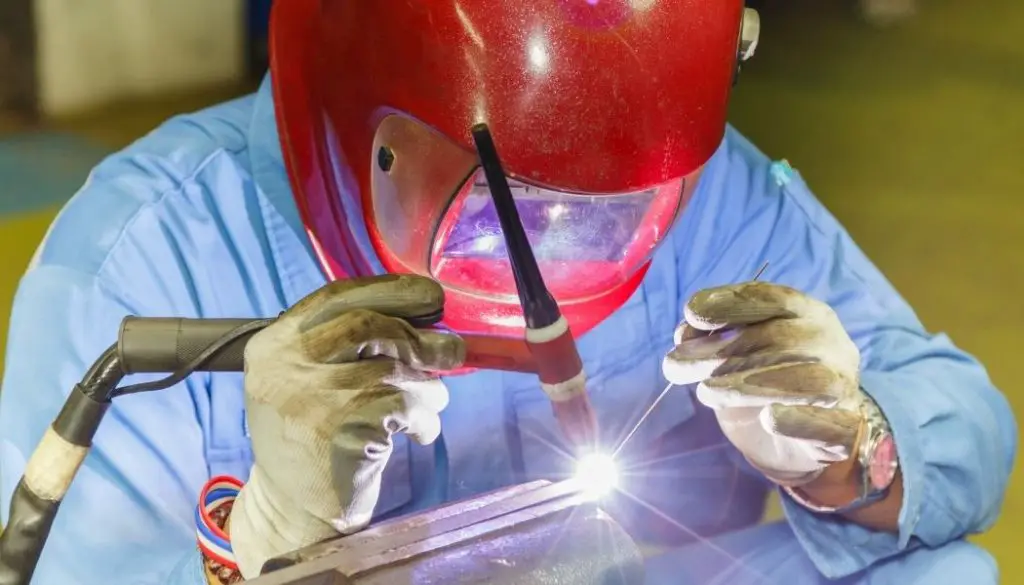When you consider gas welding vs. arc welding, the primary distinction is that the former uses burning gas while the latter uses electricity to create joints.
Read on to learn more about how each one works and its pros and cons.

Table of Contents
What Is Gas Welding?
Gas welding creates joints between metals by combining combustible gasses with oxygen. The fuel gas that this type of welding uses is typically acetylene.
The equipment this process uses mixes the combustible fuel gas with the oxygen. This creates a blazing hot flame reaching a temperature of 5,700 ℉.
A torch concentrates this flame on the location where the welder wishes to fuse two metals. This happens through the melting of both metals due to the high temperatures.
The molten metals are left to cool down and solidify, establishing the newly created joint between them. Gas welders have the option of creating joints with or without using a filler material.
Gas welding creates joints between various metals, such as aluminum, copper, and steel.
Equipment Required
Here’s a list of all the equipment you’ll require to use gas welding:
- A cylinder of oxygen
- A cylinder of fuel gas (acetylene, propane, butane)
- A pressure regulator for each cylinder
- Two flexible hoses to connect each cylinder to a mixing chamber
- A welding torch
- Protective clothing (face shield, welding gloves, jacket, helmet)
Advantages
Gas welding still has many advantages, despite being an old welding method.
First of all, gas welding doesn’t require electricity. Therefore, you can use it anywhere if you have your oxygen and fuel gas cylinders. Additionally, gas welding tends to give better results than arc welding when it comes to the surface finish of the joint.
Another perk of using gas welding is that the fuel gasses and equipment you’ll need are highly affordable and easily available.
Finally, the gas welding process is quite versatile. You can use it for various applications, such as soldering, brazing, and gas cutting.
Disadvantages
On the other hand, gas welding does have its limitations.
For starters, the gas welding process operates at a significantly lower flame temperature than arc welding. This results in the joint you create being relatively weaker.
In addition to this, the flame emitted by the torch isn’t as concentrated at the welding site as in arc welding. This means that there’s a higher rate of heat loss, and in turn, lower efficiency.
With regards to safety, the concern with gas welding is that there’s a risk of explosion. This is because of the high-pressure gasses the process uses.
What Is Arc Welding?
While gas welding uses a mixture of combustible gasses and oxygen to do the job, arc welding uses electricity to fuse metals.
The electric current that arc welding equipment creates produces heat. This melts the two metals and allows them to join as they cool.
There are several variations of arc welding. The main differences between them are whether they use AC or DC current. Another variation is whether the process is using a consumable or non-consumable electrode.
Non-consumable electrodes act to allow the current to travel from the power supply to the welding area. On the other hand, consumable electrodes have the additional job of supplying a filler metal to aid in the welding process.

Equipment Required
The equipment you’ll need to use for arc welding is as follows:
- An AC or DC welding machine
- Electrode holders (to hold the electrodes at a certain angle)
- Electric cables to carry the current
- Cable connectors to latch the cables to the electrode holder, completing the circuit
- Protective clothing (face shield, welding gloves, helmet, jacket)
Advantages
When compared to gas welding, arc welding has numerous perks.
At an operating temperature of 6500℉, arc welding is significantly faster than gas welding and creates stronger joints. Furthermore, the hotter flame is more concentrated at the welding site than in gas welding. This makes arc welding more energy efficient.
Additionally, arc welding is more cost-effective in the long run. This may be counterintuitive due to the high upfront cost of the equipment it requires. However, you’ll spend less moving forward. That’s because you don’t have to keep buying fuel gas.
Disadvantages
Arc welding still has some deficiencies despite being a more efficient method than gas welding.
The first of them is the fact that it’s a less versatile tool than gas welding. That’s because you can only use it to weld metals that conduct electricity. Additionally, the arc welding process isn’t suitable for other applications such as soldering.
Finally, arc welding doesn’t produce as good of a surface finish as gas welding.
When to Use Each
It’s best to use gas welding when you’re at a place with no access to an electrical current. Gas welding is also more suitable when your priority is the surface finish quality instead of joint strength.
Alternatively, the optimal use for arc welding is when you’re trying to get as strong a joint as you possibly can between two metals that are electrical conductors.
Conclusion
The main difference between gas and arc welding is how each process gets the job done. The former uses combustible fuel gas, while the latter uses an electrical current.
The best one for you to use depends on what your priority is when you’re welding.
